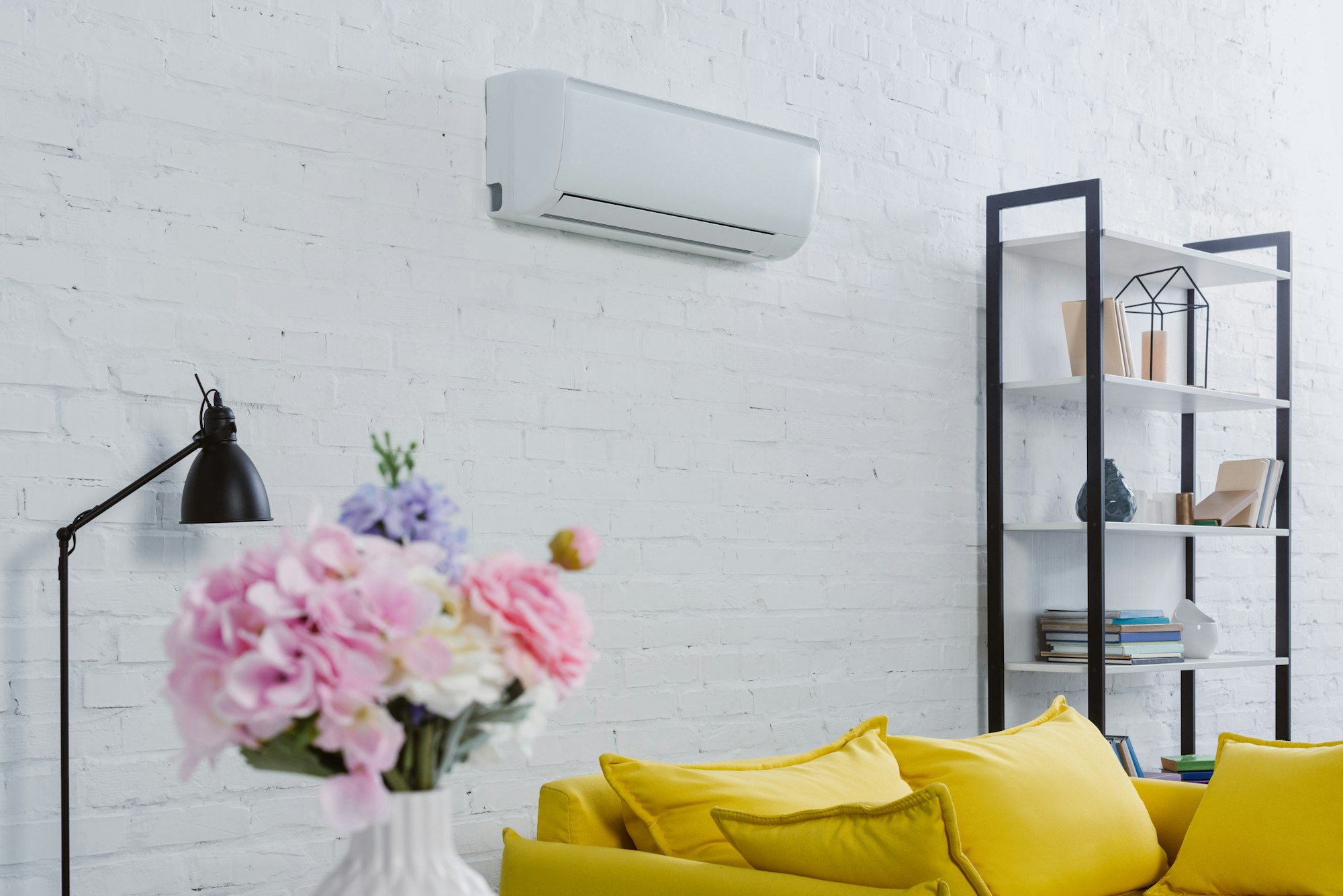Fresh and cold air instantly soothes the senses. You must have experienced the bliss of breathing in the mountain air, which is light, fresh, and cold. We all love that. And so, we should never compromise on the quality of air.
Modern living has numerous advantages, but it has brought some disadvantages too. Nowadays, many living and working spaces are enclosed, and some are even air-tight. This is due to various underlying causes like extreme temperatures outside, too much noise, polluted air, and better security. However, it is not regarded as good for the overall wellbeing.
That’s why ventilation is extremely important for all living spaces.
Why is proper ventilation important in your building?
The main purpose of ventilation is to bring in fresh air and remove stale air. It helps in keeping indoor air fresh and healthy.
The air indoors, if not well-ventilated, can build up high levels of pollutants and harmful gases. To maintain proper IAQ (Indoor Air Quality), enough air needs to be circulated.
The gases (like carbon monoxide, radon, volatile organic compounds, and particulates) and microbial contaminants (like mould, bacteria, and other allergic components) can negatively affect occupants’ health.
Sometimes the accumulation of stagnant air inside the building increases the levels of carbon and bacteria so much that indoor air is more polluted than the air outside.

WHAT IS NATURAL VENTILATION?
You must have visited historical buildings and noticed that they have natural ventilation. Usually, vents and openings like doors, windows, solar chimneys, and trickle ventilators are used for natural ventilation. It is driven by pressure differences between outside and inside air.
What are the benefits of natural ventilation?
- Regulates inside temperature: The moving out of inside warm air helps moderate inside temperature.
- Moderates humidity levels: If there is no airflow, the stale air inside increases the humidity levels and makes you feel sticky.
- Brings in more Oxygen: The level of CO2 increases in enclosed areas with many people. So, it is advisable to let fresh air in and replenish Oxygen levels.
- Cleaning up harmful accumulates: The percentage of moisture, odours, bacteria, dust, carbon dioxide, smoke, and other contaminants increases with time in a poorly ventilated space. So, creating air movement improves the whole atmosphere.
What are the types of natural ventilation?
When we talk about natural ventilation, it is complexly based on wind energy properties.
There are two main types of ventilation:
- Wind-based ventilation – also known as cross ventilation
- Buoyancy-driven ventilation – better known as stack-effect ventilation
Wind-based ventilation – for keeping a living space airy, fresh and healthier, naturally
The wind blowing outside the building has different pressures. Some areas have high, while others have low pressure.
The windward side of a building is an area of high pressure, while the leeward side & roof are low pressure. So, planning proper ventilation by placing openings and vents of different sizes and types can ensure better airflow inside a building.
The most common type of ventilation based on this principle is windows. It is indeed one of the low-cost ventilation solutions in certain facilities. Through windows, the fresh air enters and circulates throughout the building and moves out through the opposite side.
Buoyancy-driven ventilation – for well-ventilated surroundings round the year
The basic principle of airflow is that the cool air stays below the warm air. As the warm air moves up, the heat generated within buildings rises towards the ceiling.
So this movement of warm air creates natural airflow in buildings with high ceilings and large structures. This phenomenon is called thermal buoyancy or the stack effect.
The warm air rises in the building and escapes via natural ventilators. The wall louvres at the floor level allow cool air to enter, replacing the warm air to move out.
It has an advantage over cross-ventilation, working on cool and calm days.
And therefore, buoyancy-driven ventilation is regarded as the best form of natural ventilation, which works round the year.
What are the limitations of natural ventilation?
For ages, building architects followed natural techniques for ventilation in the buildings. But the 20th century revolutionised the ways to add ventilation by using mechanical ways.
Here are some of the limitations of natural ventilation:
- Bigger and deeper buildings cannot be ventilated from the perimeter. They need stronger and quicker ventilation.
- If the building is located in a congested place, the air flow gets restricted.
- If the Air Quality Index (AQI) is poor outside because of pollution, the inside air gets polluted.
- If the noise and sound pollution is higher outside, openings and vents bring the same inside the premises.
- The number of people, equipment, lighting, and electromagnetic radiation of the Wi-Fi network results in a build-up of heat and contaminants inside, which may not go naturally.
- You can not use particulate filters to avoid dust, insects, and pollens entering the building with outside air.
- You can not speed up or slow down the ventilation process as per requirements.
Mechanical ventilation is driven by fans or other mechanical systems. It allows outdoor airflow into a building through supply fans and draws warm inside air out of the building with exhaust fans. While some establishments may use one aspect, others may use both.
Mechanical ventilation is also commonly used by Heating, Ventilation, and Air Conditioning (HVAC) systems.
What are the benefits of mechanical ventilation?
By installing a mechanical ventilation system, most of the limitations of natural ventilation can be easily sorted.
Along with the basic purpose of removing stale air, humidity, odours, and pollutants, there are also some added benefits of mechanical ventilation.
- No dependence on outdoor weather, as it works fine in all weather conditions.
- You can pre-heat or pre-cool air supply as per your requirement.
- It can be equipped with an efficient air filter to clean volatile gases and harmful particulates.
- You can regulate levels of indoor pollution and humidity.

What are the common ways of mechanical ventilation?
Air Handling Units – operate through ducts installed in the building premises
The most commonly used technology for mechanical ventilation is Air Handling Units (AHU), connected to ductwork within the building.
A regular AHU consists of:
- An insulated box for the storage of filter racks or chambers
- A fan (or blower)
- Heating & cooling elements (in many cases)
AHUs are generally installed on the floors, roof, or basement in commercial buildings. The large insulated box connected to the ductwork channels conditioned air throughout a building and returns it to the AHU.
AHUs are preferred in modern-day energy-efficient buildings. Depending on the size and scope of ventilation, it could be medium-sized heat recovery ventilation or large-scale air handling units.
The use of the latest technologies and modern gadgets increase the heat recovery efficiency.
Heating, Ventilation & Air Conditioning (HVAC) system – ideal for 24×7 operations in the buildings
If the mechanical ventilation involves other atmosphere conditioning processes like heating, cooling, and humidity control, the HVAC system is the preferred choice.
The HVAC system is installed in buildings that operate 24×7. It is efficient, needs less maintenance, and can be customised as per the need of the premises.
HVAC systems have inverter-driven compressors, which help to maintain year-round seasonal efficiency. Also, the 25mm double-skinned panels provide long-lasting life and improve thermal and sound insulation.
VRV and VRF – designed for controlling different spaces or floors in a building
VRV (Variable Refrigerant Volume) and VRF (Variable Refrigerant Flow) are not different HVAC technologies but two different terms.
Daikin, the leader in the HVAC segment, has registered the VRV term as an official trademark. All other companies use VRF for their similar HVAC systems.
VRV or VRF systems are useful for individual control of different spaces and floors in a building.
The air curtain acts as a barrier for hot and cold air loss. Due to its unique design, this ventilation system integrates seamlessly into false ceilings.
Roof ventilators – the most commonly used ventilation system
Roof ventilators are the most common and simplest forms of mechanical ventilation systems. It is simply done by installing fans at the ceiling level.
You can also install fans and blowers on the ceiling with louvres. It helps circulate cold air inside and extract warm air outside.
Overall, ventilation plays an important role in the wellbeing of both the occupants and the building. It also addresses various health and safety parameters. Presently, a wide range of ventilation systems is available in the market, which can be customised as per specific needs.
If you are looking to maximise the airflow and ventilation in your home or office setup, connect with a professional company that can address your specific ventilation installation requirement.
Air Con Company is one such company. Based in London (UK), the company is backed by an experienced and qualified team of engineers that can design and install highly efficient ventilation systems that ensure good air circulation and reduce wastage in any building.




